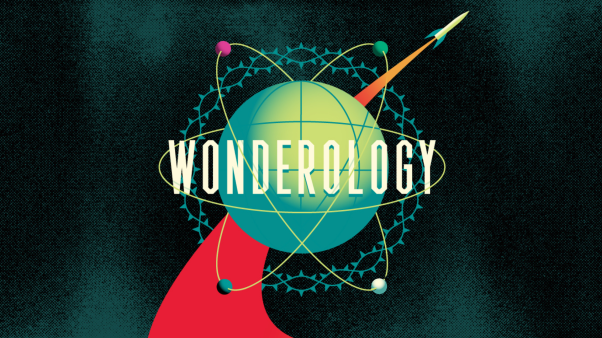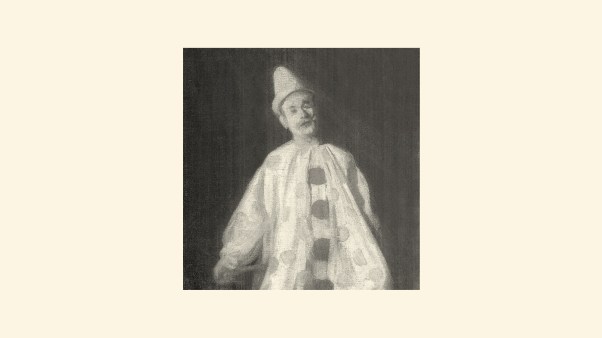For almost two hundred years historical criticism of the New Testament has been retreating before the advance of the historical Jesus. Great ramparts have been erected against him, yet each has been overpowered in turn. Liberalism sought to limit Jesus to non-supernaturalistic terrain and manned its defenses with the great names of nineteenth-century historicism—Baur, Harnack, Strauss, and others. Yet liberalism now lies as impotent as Shelley’s Ozymandias (“Look on my works, ye mighty, and despair”). After the fall of liberalism, New Testament scholarship in Germany erected an existential fortress that flew Bultmannian colors, but it too is being overthrown. In recent years Bultmann has been deserted by his followers, and a ‘ “new” quest for the historical Jesus is in progress. The new quest is promising. Whether it will eventually come to terms with Jesus is one of this century’s imponderables.
Critical study of Jesus’ life has reached a crucial juncture. Scholars can screen out the elements in Christ’s life that they find objectionable, with the result that the historical Jesus will either fade into the irrecoverable past or be recast as an unindividualized shadow of modern man. Or scholars can yield to the Jesus of Scripture, with all his disturbing elements. Only this will satisfy the deepest needs of men.
I
The old quest of the historical Jesus dates from the death in 1768 of Hermann Samuel Reimams, the historian with whom Albert Schweitzer begins his survey of nineteenth-century research. Reimarus was no New Testament scholar, but at his death he left behind a manuscript that was to have far-reaching implications. He argued that historians must distinguish between the “aim” of Jesus and the “aim” of his disciples, that is, between the Jesus of history and the Christ of early Christian preaching. Faced with the choice between what he believed to be mutually exclusive figures, Reimarus opted for the former and posited a non-supernatural Jesus: Jesus preached the coming of God’s kingdom, but he died forsaken by God and disillusioned. Christianity was consequently viewed as the product of early disciples who stole the corpse, proclaimed a bodily resurrection, and gathered followers.
Reimarus was certainly extreme and his work polemical. But his views of Christian origins set a pattern for a century of historical-Jesus research. Reacting against the supernatural element in the gospels and casting about for a Jesus made in their own image, idealists found Christ to be the ideal man, rationalists saw him as the great teacher of morality, and socialists viewed him as a friend of the poor and a revolutionary. The most popular lives of Jesus, those of David Friedrich Strauss, rejected most of the gospel material as mythology, and Bruno Bauer ended his quest by denying that there ever was a historical Jesus. Bauer explained all the stories about Jesus as the products of the imagination of the primitive Christian community.
One can hardly fail to be impressed even today at the immense energy and talent that German scholars poured into the old quest for the “original” Jesus, but the results were meager and the conclusions wrong. Scholarship attempted to modernize Jesus. But the Jesus they produced was neither the historical Jesus nor the Christ of Scripture. By the beginning of this century, when Schweitzer declared his moratorium on the liberal quest, scholars were beginning to realize that a new approach was needed.
II
If the liberal quest for the historical Jesus had faltered, as it seemed, through its pursuit of a non-supernaturalistic original Jesus, it was possible that a new approach might concentrate on the Jesus of Scripture, on the Christ of faith. Thus scholarship turned in this direction. Hugh Anderson writes:
The nineteenth-century liberal quest was intent on driving a wedge between the historical Jesus and the Christ of the kerygma. In making the cleavage, the liberal historians fastened onto the human Jesus, the portrayal of whose history was the abiding theme of their researches, as the great object of their faith. The impression we now get in retrospect is that, having differentiated between the man Jesus and the Christ, and having envisaged the need to choose between Jesus or the Christ, they voted wholeheartedly for Jesus. In our own century the vote has swung. There has been something of a landslide away from the historical Jesus to the Christ of the Church’s kerygma, the Christ of the Church’s faith … [Jesus and Christian Origins, p. 18].
The shift that Anderson mentions may be traced to a book by Martin Kähler, The So-Called Jesus of History and the Historical, Biblical Christ. Kähler rejected the attempt to get behind “Christ” to ‘ “Jesus,” arguing that the proper concern of Christians is with the Christ of the early Christian preaching. Only this Christ, he said, is of permanent significance for faith. At the same time, Kähler did not neglect the question of history, for he felt that the biblical descriptions of Christ give every indication of being the most complete reality.
Since the Second World War elements of Kähler’s thesis have been revived in an extreme form by Rudolf Bultmann. Much of Bultmann’s energy has been expended on stripping away what he feels to be the “mythology” of the New Testament writers—heaven, hell, miracles, and so on. But Bultmann’s views are misunderstood if one imagines that the historically real Jesus lies beneath the allegedly mythological layer. According to Bultmann, what lies beneath the mythology is the Church’s deepest understanding of life created by its experience with the risen Lord. Consequently, nothing may be known of Jesus in terms of pure history except the mere fact that he existed. In Bultmann’s words, “We can now know almost nothing concerning the life and personality of Jesus” (Jesus and the Word, p. 8)
Operating under the assumption that a period of oral transmission intervened between the years of Christ’s earthly ministry and the transcribing of the traditions about him in the Gospels, Bultmann envisions a creative church that devised the unique theology and sublime ethics of the New Testament. In Bultmann’s reconstruction there is no literal preexistence of Christ, no virgin birth, no sinlessness and deity, no literal atonement, no ascension, and no second coming. By these motifs, he says, the early Church was actually speaking of the possibility for all men of dying to the past and opening themselves to the future. Salvation consists in experiencing a profound inner release and freedom.
According to the Bultmannian school: (1) the earliest Christian sources exhibit no interest in the actual history or personality of Jesus, (2) the biblical documents are fragmentary and legendary, (3) there are no other sources against which to check the data provided by the biblical writers, and (4) preoccupation with the historical Jesus is actually destructive of Christianity, for it leads, not to a faith in Jesus as God, but to a Jesus-cult, the effects of which can be clearly seen in Pietism.
Fortunately, Bultmann’s system has not proved satisfying either intellectually or spiritually, and theological leadership has now passed into other hands. In the first place, even Bultmann’s disciples have expressed dissatisfaction with his statements on the historicity of Jesus. If, as Bultmann says, virtually all we need to know of the historicity of the Christian faith is the mere “thatness” of Jesus Christ, his existence, then why even that? Why was the incarnation necessary? And if it was not really necessary or if it is impossible to show why it was necessary, what is to keep the Christian faith from degenerating into the realm of abstract ideas? And what in that case is to distinguish its view of the incarnation from Docetism or from a Gnostic redeemer-myth? Käsemann raised these questions in his famous address to the reunion of old Marburg students in 1953, arguing that “we cannot do away with the identity between the exalted and the earthly Lord without falling into docetism and depriving ourselves of the possibility of drawing a line between the Easter faith of the community and myth” (Essays on New Testament Themes, p. 34). A few years later Joachim Jeremias voiced a similar warning:
We are in danger of surrendering the affirmation “the Word became flesh” and of abandoning the salvation-history, God’s activity in the Man Jesus of Nazareth and in His message; we are in danger of approaching Docetism, where Christ becomes an idea [The Expository Times, 69, p. 335].
Even Bultmann’s supporters must find it a bit incongruous that in his Theology of the New Testament the former Marburg professor can give only thirty pages to the teachings of Jesus while devoting more than one hundred pages to an imaginary account of the theology of the so-called hellenistic communities, of which we know absolutely nothing.
It is also clear to many New Testament scholars that Bultmann has minimized both the early Church’s concern for the facts of Jesus’ life and its dependence upon him as teacher. While it is true, as Bultmann argues, that the biblical documents are concerned primarily with Jesus’ identity as the Messiah and with the revelation he brings of the Father, it is no less significant that their understanding of him is embodied, not in theological tracts or cosmic mythologies (as in Gnosticism), but in Gospels. Their structure is historical. Moreover, every verse of the Gospels seems to cry out that the origin of the Christian faith lies, not in the sudden enlightenment of the early Christians or in an evolving religious experience, but in the facts concerning Jesus Christ—his life, death, and particularly his resurrection. Even the kerygma proclaims the historical event, for it was Jesus of Nazareth who died for our sins according to the Scriptures, was buried, and rose again on the third day.
The nature of Christianity and its written sources constantly drive the student to the figure of the historical Christ. To settle for a kerygma divorced from history is to reject the Incarnation, and neither the Church’s documents nor the risen Lord of the Church will long permit it.
Throughout the modernist period, from Reimarus to Schweitzer, the major studies of Christ’s life combined a concern for historical fidelity with a commitment to liberal theology. In the Bultmannian period there has been acute historical skepticism coupled in many cases with doctrinal conservatism, or at least confessionalism. Both have proved inadequate. The old liberalism tried to find Jesus behind the New Testament while the Bultmannian school tries to find him above and beyond it in individual involvement and response. It is no wonder that the new school has tended to produce an existential Christ just as the earlier generation produced a purely human one.
III
Growing dissatisfaction with the need to choose between purely historical interests and the Christ of the early Christian preaching has inspired the so-called new quest for the historical Jesus, a quest that carries scholarship of the Gospels into a third and more promising phase.
Since 1954, when Käsemann’s address to the old Marburg students first appeared in print, many of the post-Bultmannians—Käsemann, Fuchs, Bornkamm, Conzelmann, Robinson—have reacted both to the extremely negative results of the old quest and to the historical defeatism that characterized the Bultmannian years. At the same time they have sought renewal of the search for the Jesus of history along new lines. These men reject the psychologizing about Jesus that was prominent in the liberal quest. But they also reject Bultmann’s premise that the facts about him cannot and need not be known. Instead of a historical Jesus stripped of all mystery and all doctrinal significance, the post-Bultmannians seek a Jesus whose words and deeds are to be understood only in theological and existential categories. Thus they are again opening the possibility that some aspects of the Christ of the kerygma and the Jesus of history may be one.
The work of these scholars involves more than a change of attitude and approach. It also involves a new appreciation of Jesus and his message. For instance, Käsemann argues that scholarship can be certain that Jesus possessed a unique sense of authority, an authority that rivaled that of Moses. According to Käsemann, Jesus believed himself divinely and uniquely inspired. He writes:
While Jesus may have made his appearance in the first place in the character of a rabbi or a prophet, nevertheless his claim far surpasses that of any rabbi or prophet.… Certainly he was a Jew and made the assumptions of Jewish piety, but at the same time he shatters this framework with his claim. The only category which does justice to his claim (quite independently of whether he used it himself and required it of others) is that in which his disciples themselves placed him—namely, that of the Messiah [Essays on New Testament Themes, p. 38].
Ernst Fuchs and Günther Bomkamm not only follow a similar line but also add assurances about what Jesus did. They stress his gracious attitude toward social outcasts and his self-consciousness of an ability to forgive sins. James M. Robinson notes “an unmistakable movement toward a consensus as to the basic direction of Jesus’ message” (“The Formal Structure of Jesus’ Message,” Current Issues in New Testament Interpretation, ed. by Klassen and Snyder, p. 97).
The prominence given such views today represents a promising reaction against the extreme skepticism of the Bultmannian era. But even this newer portrait of Jesus is not satisfying. One great discovery has emerged from the post-Bultmannian studies—namely, that we cannot have the historical Jesus without the risen Christ (the error of liberalism), nor the risen Christ without the historical Jesus (the error of the early Bultmannian school). But the new quest has still not come to terms with either prong.
Robinson argues that the selfhood of Jesus is “available to us … via historical research and via the kerygma” (A New Quest of the Historical Jesus, p. 125). But the historiography of the post-Bultmannians still reveals a one-sided commitment to existentialism, which influences the selection of data. And reliance on the narrowest criteria for historical authenticity inevitably rules out valuable dimensions of Christ’s life and personality. Exegetes wish to admit only those aspects of Christ’s life that have no parallel in first-century documents. But Jesus was both the Son of God and a man of his times, a rabbi who spoke in terms his followers would understand. Hence, much of his teaching and many of his acts must have been very similar to the teaching and actions of many of his contemporaries.
There is no doubt, moreover, that most post-Bultmannians are still highly reluctant to admit the supernatural. Thus, Käsemann seems to follow in the footsteps of nineteenth-century liberalism when he contrasts the Gospels of Matthew, Mark, and John with that of Luke, arguing that Luke erred in attempting to contain Christ’s life within the category of historicity. He argues that Luke’s approach wrongly makes “Jesus into a miracle-worker and the bringer of a new morality, the Cross into a misunderstanding on the part of the Jews, and the Resurrection into the marvellous reanimation of a dead man” (Essays on New Testament Themes, p. 30).
IV
For over two hundred years the quest of the historical Jesus has had its ups and downs; for most of those years the Christ of scholarship has emerged in a fashionconscious mini-version, carefully tailored to the philosophy and interests of those who write his story. Scholarship has pursued its way with vigor. Yet it is a tribute to the inescapable historicity of Jesus and to the reliability of the Gospels as history, not to scholarship, that a truer picture of Jesus has emerged in recent studies.
The new historians of Christ’s life are on the way, but they have not gone far enough. It is true that the Gospels are theology as much as they are history. This is the one great contribution of the Bultmannian school. But the New Testament claims to present, not merely a spiritual appraisal of Jesus’ life and death, but the proper appraisal. “Jesus died for our sins.” “Jesus rose for our justification.” The Bible never presents these statements as optional interpretations to be measured against one another, weighed, and possibly rejected. They are true, and the events of Jesus’ life cannot be understood without them. Oscar Cullmann constantly calls attention to this, noting that the New Testament takes its place alongside the Old Testament in presenting both the divine acts in history and the divinely given interpretation of those acts.
It cannot be forgotten, moreover, even in the most critical appraisal of the New Testament, that the biblical writers lay claim to divine inspiration. And this is to say that they are conscious of being guided by Christ’s Spirit. In the farewell discourses in John, Jesus observes that “the Holy Spirit, whom the Father will send in my name, he will teach you all things, and bring to your remembrance all that I have said to you” (John 14:26). And he adds, “When the Spirit of truth comes, he will guide you into all the truth … for he will take what is mine and declare it to you” (John 16:13, 14). If this is true, then one cannot legitimately claim to recognize the voice of the risen Christ as he is present to us through the preaching and at the same time reject the testimony of the New Testament about him. According to Scripture, the definitive testimony of the risen Christ is precisely the material that we have transmitted through the historical memory of specially commissioned and divinely inspired apostles.
Ultimately scholarship must decide, not between the Jesus of history and the Christ of faith (a stage already passed in the discussions), but between its own reconstruction of Christ’s history after a sifting of the biblical material and Jesus’ own interpretation of his history as it is transmitted to us by the Spirit in the New Testament documents.
Milton D. Hunnex is professor and head of the department of philosophy at Willamette University, Salem, Oregon. He received the B.A. and M.A. degrees from the University of Redlands and the Ph.D. in the Inter-collegiate Program in Graduate Studies, Claremont, California. He is author of “Philosophies and Philosophers.”










